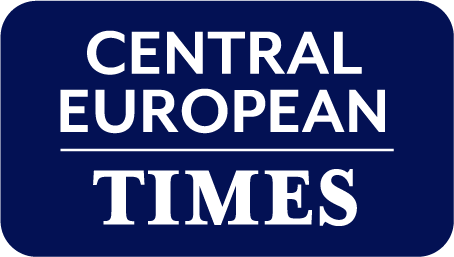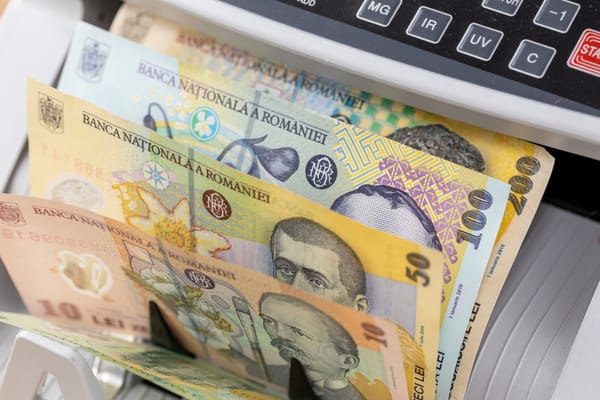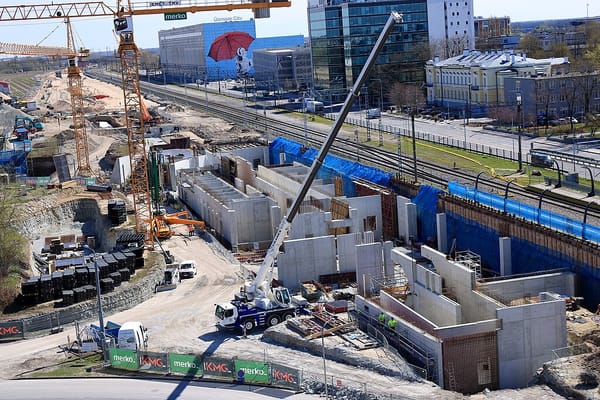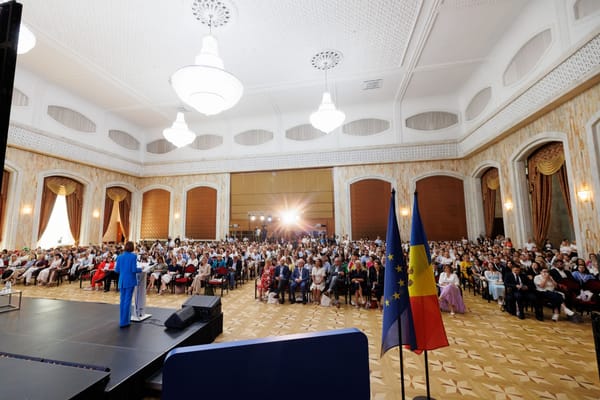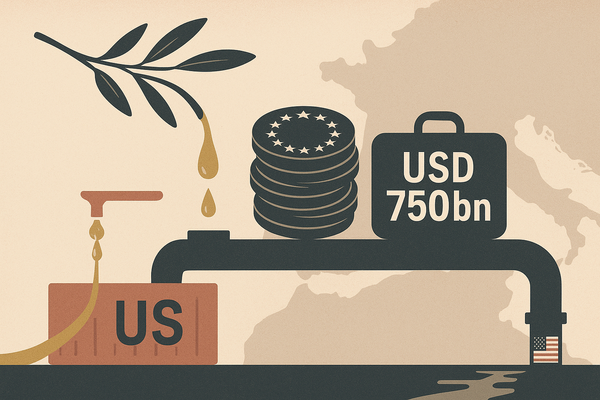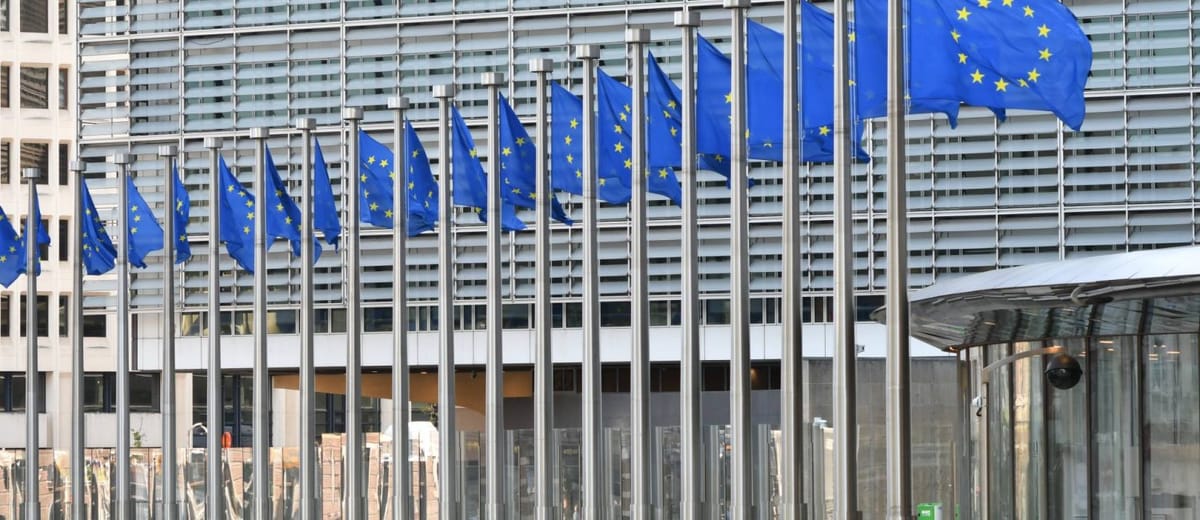
EC unveils EUR 2tn 2028-34 budget draft, tilting funding model towards CEE countries
The European Commission (EC) formally proposed a EUR 2tn long-term budget on 16 July, aiming to simplify EU funding and shift more control to national governments.
Central and Eastern Europe (CEE) states are expected to benefit most from the reforms, which prioritise defence, border management and per-hectare farm payments.
EC President Ursula von der Leyen said “It is a budget that matches Europe’s ambition, that confronts Europe’s challenges and that strengthens our independence. The budget is larger. It is smarter and it is sharper. It delivers for our citizens and our business, our partners and our future.”
New EUR 2tn framework for a new geopolitical reality
The changes form part of the EUR 2tn draft 2028-34 Multiannual Financial Framework (MFF), which responds to geopolitical instability, wealth inequality and rising migration pressures. Under the new model, 27 national and regional partnership plans would replace separate cohesion and farm funding schemes. The budget represents 1.26% of the bloc’s average gross national income (GNI) and includes major structural reforms.
Von der Leyen said “In all the MFF that is being proposed, the respect for the rule of law is unconditional. The rule of law is a must for all funding from the EU budget… the national and regional partnership plans will make the rule of law and fundamental rights a condition for investment and a focus for the reforms.”
CEE set to gain from farm, defence, border funding shifts
The EC plans to consolidate hundreds of spending instruments into national and regional Partnership Plans, simplifying access to EU funds. These plans will cover cohesion, agriculture, digital infrastructure, climate transition, health and defence.
Security and defence funding will rise to EUR 131bn, including a tenfold increase in military mobility investment. Migration and border management funding will triple to EUR 34bn.
The EC’s allocation formula would raise per-hectare payments in states with historically low Common Agricultural Policy (CAP) support. This is expected to benefit Poland, Romania and the Baltic states, along with Greece and Malta, which manage high migration inflows.
“Countries with large agricultural areas and relatively lower per-hectare payment, which is basically all eastern European countries, will benefit the most,” said Romy Hansum of the Jacques Delors Centre.
Opposition from wealthier net contributors
The European Parliament (EP) signalled resistance to merging cohesion and agricultural policy funding, with MEPs calling for separate funding guarantees for each policy area to be maintained.
Pushbacks in response to the draft came from politicians from all over CEE, including European Committee of the Regions president Kata Tutto, who said the reform risks undermining local decision-making.
“This could become an overly-complicated way to offer a blank cheque to national governments,” Tutto said. “Turning cohesion policy into a ‘Hunger Games’ between sectors pits farmers against city mayors.”
Romanian MEP Siegfried Muresan said the EP’s "utmost priority is that the identity and strength of the common agriculture and cohesion policies be preserved. … You cannot have security without food security and you cannot have a competitive economy without an investment policy. This is why our traditional policies, the common agriculture policy and the cohesion policy are today more relevant than ever,” Muresan added.
Member states such as France, Germany and Spain, which contain poorer internal regions reliant on cohesion funding, could lose out under the new model. Northern net contributors including the Netherlands and Sweden have criticised overall increases in EU spending.
CAP payments ringfenced, flexibility expanded
The EC said EUR 291bn in direct farm payments would remain protected. The combined fund includes EUR 450bn for cohesion, rural development and fisheries, while allowing states to reallocate spending across priorities including defence capabilities, migration response and green transition.
A performance-linked reserve system would reward results while preserving cohesion objectives. Each member state’s allocation would remain within 80–105% of current levels.
The proposal also introduces a EUR 131bn defence and space window, a EUR 100bn Ukraine Facility, and a EUR 400bn crisis loan mechanism.
Hungarian Prime Minister Viktor Orban said “Brussels' proposal can be summed up as a pro‑Ukrainian budget… It should be withdrawn and a new one drawn up… in the interests of the people of Europe and European farmers," Orban added.
Digital, clean-tech, biotech, health, space all to receive billions
A new European Competitiveness Fund (ECF) will centralise investments in digital, clean-tech, biotech, health, defence and space. Horizon Europe will receive EUR 175bn, while a new crisis mechanism will offer up to EUR 400bn in standby loans.
The external action budget will include EUR 200bn under the Global Europe instrument, with EUR 100bn earmarked for Ukraine’s recovery and EU accession process.
To fund the proposal without increasing national contributions, the EC plans new EU-level revenue sources: emissions trading and the carbon border adjustment mechanism (EUR 11bn), a tobacco levy (EUR 11.2bn), an e-waste charge (EUR 15bn), and a corporate contribution (EUR 6.8bn).
Unanimous agreement from all 27 member states and approval by the EP are required before the framework can enter into force on 1 January 2028.
Portuguese MEP Carla Tavares said “We will not allow the financing of our key priorities to be compromised by the repayment of NextGenerationEU. The EU is based on solidarity, and economic, social, and territorial cohesion (and) “upward convergence is a defining factor of the EU project.
“However you try to package this, what we have is a real‑terms investment and spending freeze, we will not hesitate to fully flex our muscles.”
